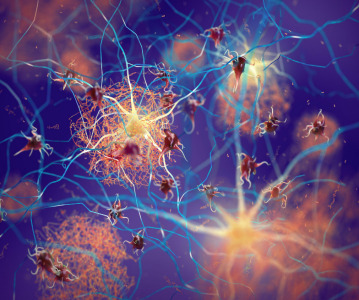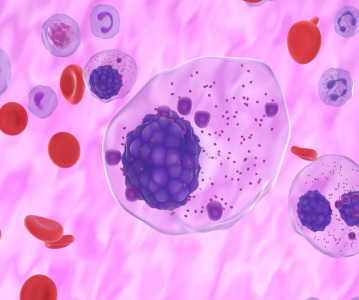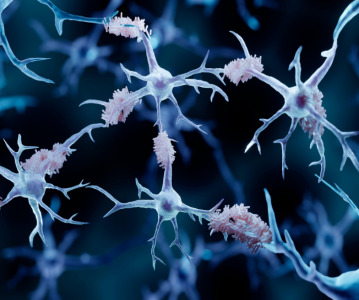Two Drugs are No More Effective than One to Treat Common Kidney Disease

Using two drugs was no more effective than a single drug in slowing disease progression in people with autosomal dominant polycystic kidney disease (ADPKD), according to two studies funded by the National Institutes of Health (NIH). One of the studies also showed that rigorous blood pressure treatment slowed growth of kidney cysts, a marker of ADPKD, but had little effect on kidney function compared to standard blood pressure treatment.
The results of the HALT-PKD Clinical Trials Network studies will be published online 15 November in two papers in the New England Journal of Medicine to coincide with presentation at the American Society of Nephrology annual meeting.
“Enlarged cysts in kidneys can lead to reduced kidney function and eventually kidney failure, where the only treatment is dialysis or transplantation,” said study author Michael Flessner, a programme director at the NIH’s National Institute of Diabetes and Digestive and Kidney Diseases, which funded the trial. “The HALT-PKD findings show that people with polycystic kidney disease do not need to take both of the drugs studied to slow their rate of kidney cyst growth and decline in kidney function.”
The HALT-PKD trial enrolled volunteers to test whether a combination of commonly used FDA-approved drugs, lisinopril and telmisartan, could shrink kidney cysts and therefore slow progression of ADPKD, a genetic disorder characterised by growth of fluid-filled cysts in the kidneys. Within the trial, one study External Web Site Policy examined 558 people with early-stage ADPKD and relatively healthy kidneys. The other study External Web Site Policy treated 486 people with more advanced disease and decreased kidney function. In each study, half of participants were randomly assigned to receive lisinopril and telmisartan, while the other half received lisinopril plus a placebo. In both studies, adding the second drug did not change kidney function or rate of increase in kidney cyst size.
In the study of people with early ADPKD and healthy kidneys, researchers also tested if decreasing blood pressure below usual targets would slow progression of ADPKD and preserve kidney function. High blood pressure is a common and damaging effect of ADPKD. Half the participants were assigned to a standard blood pressure group (between 120 and130 over 70–80), and half to a lower blood pressure group (between 95 and 110 over 60–75) but still within the normal range.
Participants in the lower blood pressure group received more rigorous treatment, taking more medication to maintain a lower blood pressure. The lower blood pressure group had a 14% decrease in kidney cyst size compared to those in the standard blood pressure group. However, kidney function — measured by estimated glomerular filtration rate (eGFR) — was about the same as the standard group at the end of the trial, yielding no clinical benefit. About 15% more of the people in the lower blood pressure group experienced lightheadedness and dizziness.
“The HALT-PKD studies were well performed and the largest of their kind,” said Robert Star, director of the Division of Kidney, Urologic, and Hematologic Diseases within NIDDK. “More research is needed to better understand how polycystic kidney disease destroys kidney function over time, and what combination of medications can most safely and effectively prevent or undo the damage caused by this devastating condition.”
Related News
-
News BioNTech to begin mRNA vaccine manufacturing in Rwanda by 2025
German biotechnology company BioNTech has stated their intentions to begin production at their mRNA vaccine factory in Rwanda by 2025, which will mark the first foreign mRNA vaccine manufacturing site on the continent of Africa. -
News Identifying Alzheimer’s Disease biomarker proteins with whole blood tests
A University of Manchester spin-out pharmaceutical company, PharmaKure, has reported successful study results for the quantification of Alzheimer’s Disease biomarker proteins with a whole blood test. -
News Bill & Melinda Gates Foundation to boost mRNA vaccine initiatives in Africa with USD $40m
To address vaccine inequality and accessibility issues, the Bill & Melinda Gates Foundation aims to deliver USD $40m to various biotech companies and vaccine manufacturers in support of mRNA vaccine development. -
News CPHI Podcast Series: Exploring neurological frontiers in Alzheimer's and beyond
The next episode of the CPHI Podcast Series delves into the science and background behind some recent developments in the field of Alzheimer's disease and neurological disorders. -
News Is patient centricity the future of pharmaceutical manufacturing?
In this interview with Sandra Sánchez y Oldenhage, President of PharmAdvice, she speaks to the importance of considering patients in the manufacturing stages of the pharmaceutical supply chain, and how it can redefine healthcare. -
News CPHI Podcast Series: How to leverage AI for Drug Discovery
Artificial intelligence is the topic of debate in the latest episode from the CPHI Podcast Series, where Digital Editor Lucy Chard speaks with Bill Whitford of DPS Group about the integration of AI in healthcare. -
News Pfizer forges ahead with blood cancer therapy after approval from FDA
Pfizer gains accelerated approval from the US FDA for their new bispecific antibody therapy for multiple myeloma, set to address an unmet need for patients. -
News Alzheimer's drug donanemab deemed effective in landmark clinical trial
Results from the TRAILBLAZER-ALZ 2 Randomised Clinical Trial into the use of donanemab to treat early symptoms of Alzheimer’s disease have been analysed.
Position your company at the heart of the global Pharma industry with a CPHI Online membership
-
Your products and solutions visible to thousands of visitors within the largest Pharma marketplace
-
Generate high-quality, engaged leads for your business, all year round
-
Promote your business as the industry’s thought-leader by hosting your reports, brochures and videos within your profile
-
Your company’s profile boosted at all participating CPHI events
-
An easy-to-use platform with a detailed dashboard showing your leads and performance







